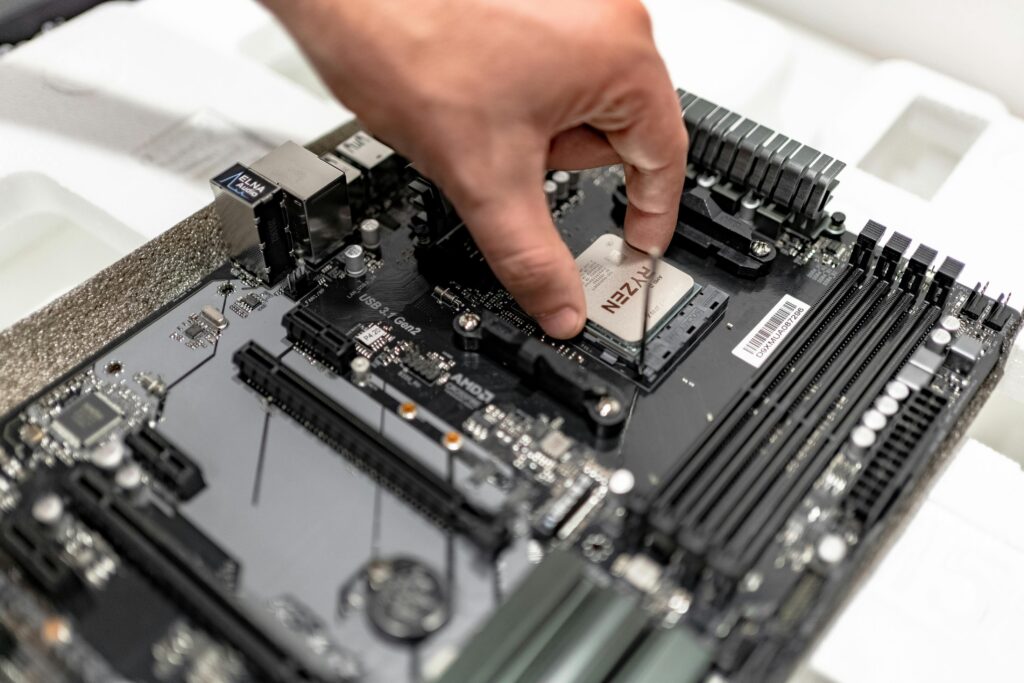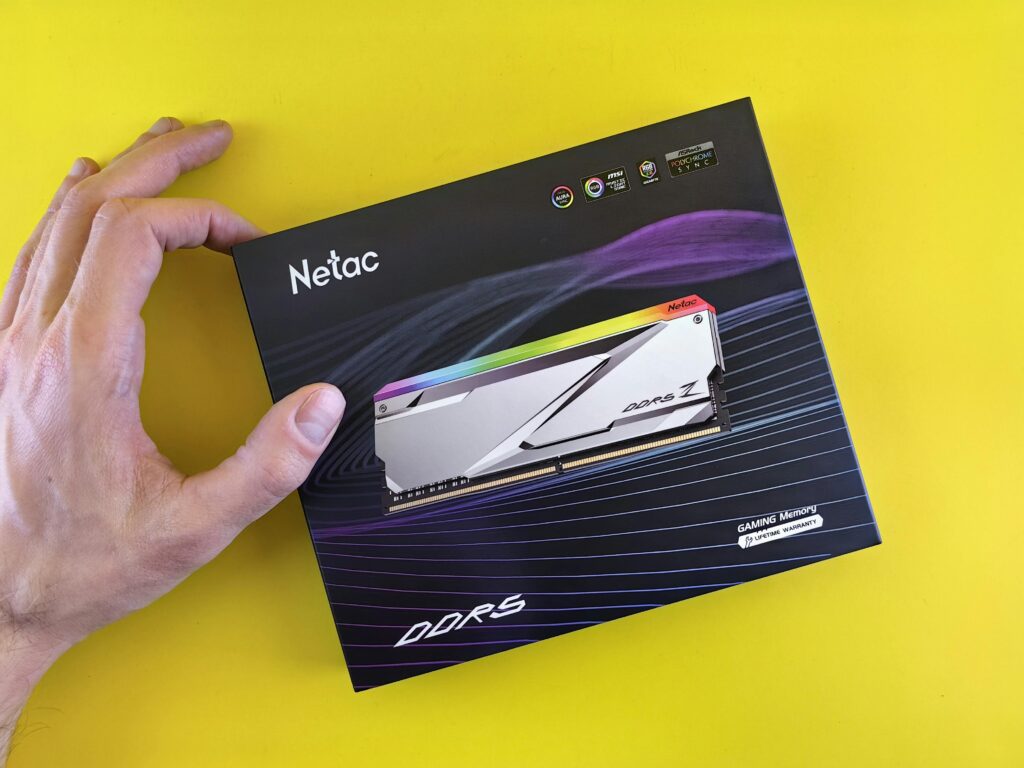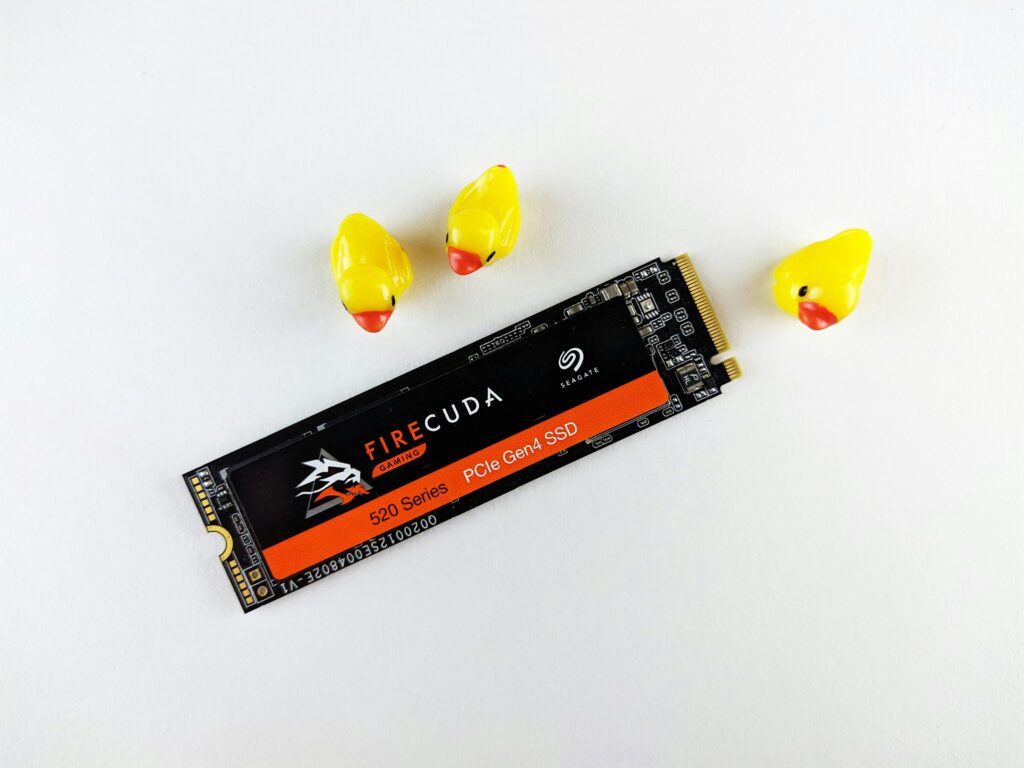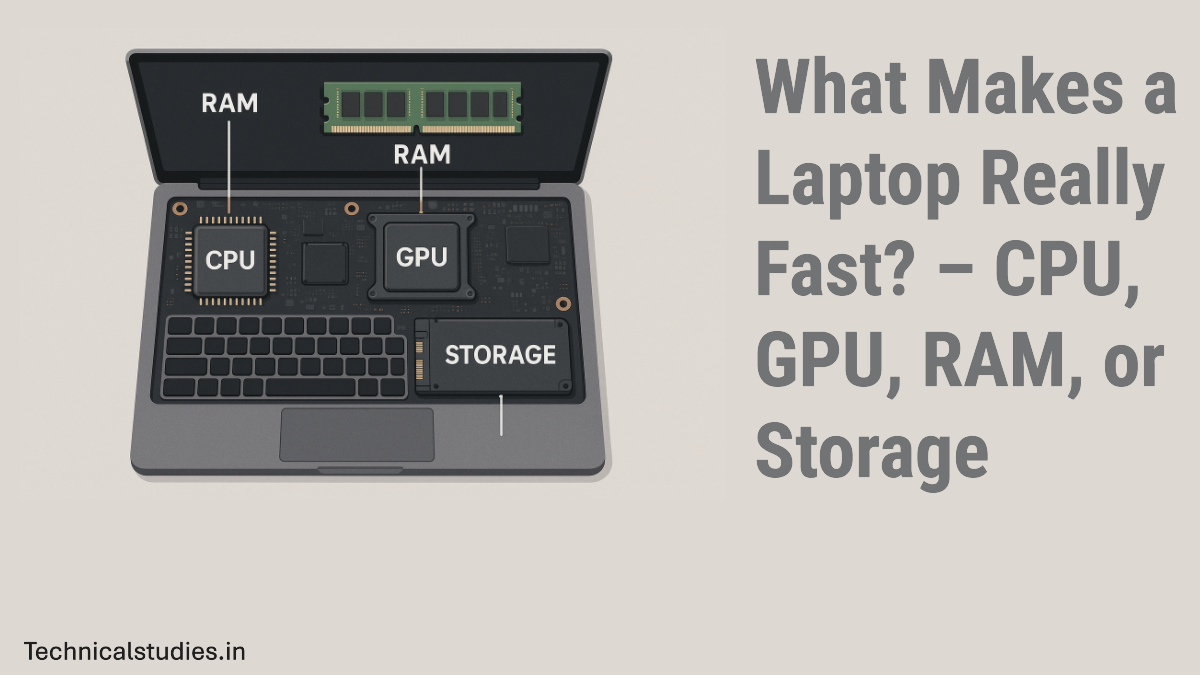Everyone desires a fast laptop, but what exactly qualifies as “fast”? When you walk into any electronics store, you will be bombarded with technical details like Intel i7 processors, NVIDIA graphics cards, 16GB of RAM, and SSD storage. Which of these factors, however, actually affects how responsive your laptop feels when used on a daily basis?
The truth is that a number of factors work together to influence laptop speed. Together, your CPU, GPU, RAM, and storage provide the responsive, fluid experience that we all desire. However, some parts are far more important than others, depending on how you use your laptop. You’ll know exactly which specifications to prioritize for your particular needs at the end of this article, which will help you make an informed laptop purchase without going over budget for features you’ll never use.
I crafted this article based on my experience and the factors one needs to look after when buying a laptop. I hope it will help you make an informed decision.
What Makes a Laptop Really Fast?
What Do I Mean by “Fast”?
Let’s first define “fast” in practical terms before getting into hardware components. Speed is about the experience you have on a daily basis, not merely about stunning benchmark numbers. Consider the following points to understand what “fast” actually means in a laptop.
- Fast boot times: The amount of time it takes for your laptop to boot up and become operational
- Instantaneous app launches: Having Word, Photoshop, or Chrome open instantly after clicking on it
- Multitasking with ease: Several programs run simultaneously without lagging or stopping
- Game responsiveness: High frame rates and stutter-free, fluid gameplay
- Quick file transfers: Transferring big collections of photos or videos without having to wait forever
- Quick web browsing: Even with numerous tabs open, pages load rapidly.
The most important realization is that there is no one-size-fits-all speed. When a video editor tries to generate a 4K project, a laptop that feels lightning-fast for a college student taking notes could crawl. The first step in selecting the appropriate speed combination is to comprehend your main use case.
CPU: The Brain of the Laptop

Consider your laptop’s CPU (central processing unit) as its brain; it processes commands, does computations, and oversees the system’s general coordination. Your CPU is coordinating these operations in the background when you click on an application, save a file, or launch software.
The CPU has an impact on your laptop’s general responsiveness, the speed at which apps launch, and how smoothly software operates. Your computer can solve issues faster and manage more tasks at once without experiencing any lag if its CPU is faster.
What to Look For
Clock Speed and Cores: Gigahertz (GHz) and cores are the units used to describe modern CPUs. Cores indicate the number of brain cells you have, whereas clock speed is the rate at which each brain cell functions. Four processing units, each operating at 3.0 billion cycles per second, make up a 3.0 GHz quad-core processor.
AMD versus Intel: Both AMD and Intel provide great choices for the majority of users:
- Intel Core i5/i7/i9: The i5 is excellent at routine chores, the i7 is great at hard work, and the i9 is for heavy users.
- AMD Ryzen 5/7/9: Frequently provides comparable performance levels to Intel’s equivalent CPUs at a better price.
Best For
For professionals using productivity applications, multitaskers, and regular users, the CPU is the essential component. A powerful CPU will have the most impact on your daily experience if you’re using spreadsheets, business software, or programs that you switch between frequently.
GPU: Graphics Muscle

Everything visual is handled by your GPU (Graphics Processing Unit), which powers sophisticated 3D visuals in games and business software, as well as the interface you see on screen. Although all laptops have some kind of graphics capacity, your ability to perform visually demanding tasks depends on the type of GPU you have.
When you’re playing games, editing films, working with 3D models, or utilizing AI-powered apps, the GPU becomes crucial. Even a simple GPU will be adequate for simple tasks like document editing, online browsing, and video viewing.
Integrated vs. Dedicated GPU
Integrated GPU: Shares system memory with your CPU. Ideal for casual gaming, daily chores, and simple photo editing. AMD Radeon Graphics and Intel Iris Xe are two examples.
Dedicated GPU: A distinct, much more potent part with its own memory. Vital for 3D work, professional video editing, and intense gaming. The AMD Radeon RX series and the NVIDIA GeForce RTX series are two examples.
Best For
Anyone working with AI or machine learning programs, engineers utilizing CAD tools, creative pros working with video or 3D content, and gamers seeking fluid, high-quality gameplay. Give GPU power top priority if your job requires you to create visuals or perform more complex operations.
RAM: The Short-Term Memory

The short-term memory of your laptop is called RAM (Random Access Memory), and it stores data about the files and apps you’re actively using. In order to save your CPU from continuously retrieving data from slower storage, RAM maintains all of this information easily accessible while you have many tabs open on your browser, music playing, and a document being edited.
Better multitasking is directly correlated with more RAM. Your laptop will drastically slow down if you don’t have enough RAM since it will begin using slower storage as temporary memory. For this reason, increasing RAM frequently results in one of the most pronounced speed boosts.
How Much RAM Do You Need?
8GB is enough for everyday tasks, including office software, web browsing, and mild multitasking. Excellent for casual users and students who frequently run many apps at once.
For most people, 16GB is the sweet spot. Allows for creative applications, intensive multitasking, and flexibility for future software needs. Perfect for power users and experts.
For most people, 32GB is too much, but it’s essential for heavy creative work, virtual machines, and professional development tasks involving big datasets.
Learn More: How Much RAM Do You Really Need in a Laptop Today?
Best For
People who want their laptop to handle anything they throw at it without slowing down include developers running many applications at once, creative professionals working with enormous files, and heavy multitaskers who have dozens of browser tabs open.
Storage: SSD vs HDD – The Hidden Speed Booster

Your operating system, apps, files, and data are all stored in storage. Many people are unaware that storage type has one of the biggest effects on how fast a laptop is perceived, frequently being more obvious than improvements to the CPU or RAM.
SSD vs HDD: The Performance Revolution
Conventional Hard Drives (HDD): Make use of mechanical components and rotating disks. Sluggish in retrieving data, particularly when launching or launching huge programs. 30 to 60 seconds is the typical boot time.
Flash memory is used by solid-state drives (SSD), which have no moving parts. Significantly quicker data access, with program launches that are almost instantaneous and startup times that are frequently less than 10 seconds.
There is a huge difference. An SSD-equipped laptop seems responsive and fast, but an HDD-equipped laptop feels slow and antiquated. For this reason, the most crucial upgrade for any laptop user is SSD storage.
Types of SSDs
Although SATA SSDs are faster than HDDs, they are constrained by outdated connecting protocols. Even so, it’s a huge advance over conventional drives.
NVMe SSD: Connects straight to your motherboard using quicker, more modern connectors. Provides the fastest storage performance found in laptops for consumers.
Best For
Everyone. Really, from simple online browsing to intensive creative work, SSD storage helps all laptop users. When purchasing a laptop in 2025 or later, make sure to request SSD storage. It is the cornerstone of contemporary laptop functionality.
Real-Life Scenarios: What Matters Most for You?
How you use your laptop will determine which parts are most important. This is a useful breakdown:
Students
Priority: an AMD Ryzen 5 or Intel i5 CPU with 8GB of RAM and SSD storage. Writing papers, conducting research, taking notes, and streaming content are your main tasks. Unless you’re studying engineering or graphic design, you don’t need a dedicated GPU.
Related: Top 9 Best Laptops for Students
Casual Users
8GB RAM and SSD storage are priorities. You don’t need pricey processors or graphics cards if your primary tasks are online browsing, email checking, Netflix viewing, and using simple apps. For seamless multitasking, prioritize SSD performance and enough RAM when allocating your cash.
Gamers
Priority: A powerful dedicated GPU, a strong CPU (at least an i5 or Ryzen 5), and a minimum of 16GB of RAM. Above all else, gaming requires processing power for visuals, but you also need adequate CPU power to prevent bottlenecks and enough RAM to run games and other apps without lag.
Related: Top 7 Best Laptops For Gamers In India
Video Editors and Designers
Priority: Each of the four elements is important. To render, you need a powerful GPU; to deal with large files, you need a lot of RAM (16–32GB); to encode, you need a powerful CPU; and to access large video files rapidly, you need fast SSD storage. High-end, well-balanced specs are crucial in this situation.
Related: Top 5 Best Laptops For Video Editing In India
Business Professionals
CPU, RAM, and SSD storage are the top priorities. Prioritize processing power for productivity software, sufficient RAM for multitasking, and SSD storage for fast file access unless your job requires creative apps. Usually, a dedicated GPU is not required.
Related: Top 10 Laptops for Business Use in India
Other Speed Factors Often Overlooked
Although CPU, GPU, RAM, and storage are the primary performance components, your laptop’s speed can also be greatly impacted by a number of additional factors:
Cooling Systems: Known as thermal throttling, laptops automatically reduce their speed when they become too hot in order to avoid harm. Longer periods of full-speed operation are maintained by proper cooling, particularly during taxing operations.
Background processes and the operating system: A system that is neat and well-maintained will operate more quickly than one that is overloaded with pointless background and startup apps. Mindful software installation and routine maintenance have a discernible impact.
Display Refresh Rate: Everything feels more snappy as you navigate through online pages or move windows around your screen with a higher refresh rate display (120Hz, 144Hz). Although it doesn’t actually speed up your laptop, it greatly enhances the impression of speed.
Power Settings: In order to prolong battery life, many laptops automatically lower performance. Make sure you know how the power management options on your laptop impact performance in various situations.
Summary: Which Component Matters Most?
My honest answer is it depends on your particular use case. Finding the ideal balance for your needs is more important than focusing on a single component that makes a laptop “fast” in general.
General performance is driven by the CPU, which impacts how quickly your laptop reacts to commands and how well apps work. Necessary for all people, but particularly crucial for productive work.
GPU manages tasks requiring a lot of graphics: Not required for simple computing operations but essential for creative work, gaming, and graphic applications.
Smooth multitasking is made possible by RAM: Having more RAM allows you to run more apps at once without experiencing lag. Crucial for anyone who maintains a large number of programs.
Loading speed is determined by storage: SSD storage offers the most visible daily performance boost. Vital to the functionality of any modern laptop, regardless of its intended application.
Balance over any one criterion is the most important realization. When multitasking, a laptop with a top-notch CPU but not enough RAM would still feel sluggish. Similarly, if you have a slow hard drive, having a lot of RAM won’t help.
Final Tips: How to Choose the Right Speed Combo
Remember these useful tips when you’re looking to buy a new laptop:
Avoid overspending on unnecessary items: Your experience won’t be enhanced by that pricey graphics card if you’re not playing games or working creatively. Invest in the parts that are important for your particular use.
Think about upgradeability: While some laptops have everything soldered in place, others let you increase the RAM or storage later. Select a laptop with upgrade possibilities if you anticipate needing additional performance in the future.
Always choose SSD over HDD: The performance difference is so significant, even for low-cost laptops, that it makes sense to pay more for SSD storage or to choose a smaller SSD over a bigger HDD.
Consider longevity: Although you shouldn’t get significantly more performance than you now require, take into account how your needs may change over time. Your laptop’s useful life might be prolonged by including some headroom in your specifications because software tends to become more demanding over time.
Keep in mind that the laptop that is “fastest” isn’t always the most costly; rather, it’s the one that is tailored to your specific needs. You will have a laptop that feels quick, responsive, and ideal for your workflow if you know what each part performs and match those characteristics to your actual demands.
FAQ
Which is more important for speed: RAM or SSD?
RAM facilitates multitasking, while SSD speeds up startup and loading times. In different ways, both are necessary.
Is more RAM always better for performance?
Not all the time. While 8GB is sufficient for light use, 16GB or more is ideal for creative or gaming purposes.
Do I need a dedicated GPU if I don’t play games?
No, integrated graphics are sufficient for office work, streaming, and browsing.
What’s the best laptop spec combo for students?
For the majority of students, a laptop with an i5 or Ryzen 5 CPU, 8GB RAM, and an SSD is excellent.
Can I upgrade RAM or storage later?
Yes, in a lot of laptops, however, not all of them can be upgraded, such as ultra-thin versions. Prior to purchasing, always make sure.
Share Now
Related
Top 9 Features of the Lenovo IdeaPad Slim 3 for Everyday Users
Why is the Asus Vivobook 15 a Solid Choice for Freelancers and Remote Workers?
Asus VivoBook 16X Laptop – A Modern & Powerful Laptop for Creators
Discover more from technicalstudies
Subscribe to get the latest posts sent to your email.

